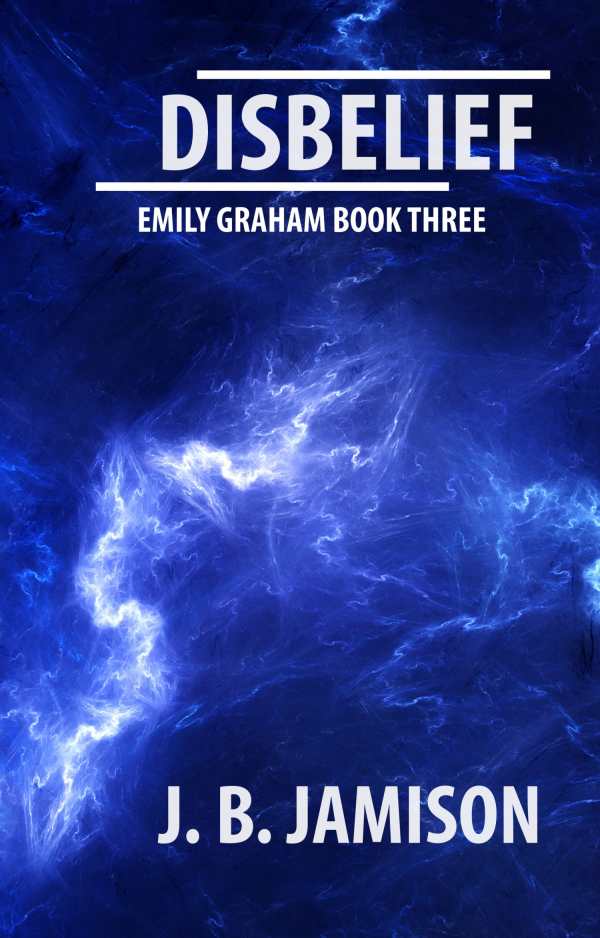Disbelief
Captivating and thrilling, this novel pits a tough agent against a formidable enemy.
J. B. Jamison’s technothriller Disbelief is a strong continuation of an involving mystery series that’s led by a tough woman.
In this installment, Agent Emily Graham finds herself once again battling a powerful enemy as a cabal of influential figures stumble into an unforeseen obstacle—one of their own has splintered off, embarking on a holy war that utilizes EMP technology against the United States, intent on striking from within. As the threat grows, Emily’s life falls apart. Her family, friends, job, and sense of duty take a hit. In an intense and personal battle, Emily races to stop the splinter group while marshaling her personal circumstances back together.
A carryover premise narrows this book’s focus to the splinter group and their new form of technology. Following the group as it gathers power and resources and enacts their master plan is captivating; the leader’s methodology blends ruthless strategy with cult-like fervor. The leader is an unstable, charismatic villain, both flawed and sinister. Subtle subplots layer in material for sequels, both with callbacks to previous interactions and blatant foreshadowing.
This third series entry is aimed at returning readers, with little emphasis placed on recapping for new readers. As a result, some elements are introduced without context. This doesn’t hamper the story’s arc, but portions of the book are confusing because of it nonetheless.
Emily is an intelligent and capable lead. As the narrative progresses and she loses most of her resources, she’s able to draw upon the allies she’s built in order to pursue leads and stop the coming war. Her interactions with others highlight her unique talents and personality. Secondary characters are less fleshed out. The large pool of background characters is used to provide a variety of perspectives on key events, but most are unimportant in the larger narrative.
Chapters transition during pivotal sequences and keep the pacing on a even keel even as tension increases. Most chapters are short and rapid. At intervals, chapters provide either alternate views of a given event or opposite views, as with the introduced perspective of the secret organization or with Emily’s attempts to find an organization ringleader. Quieter moments punctuate violent and dramatic scenes, offering respite before the story races off again. Scenes with Emily and her ailing father are the standout quiet moments in the text, filled with humanity and heart.
Scenes are inconsistently set: some are detailed, and others are sparse. More sparse chapters rely on dialogue over detailed prose, and within them it is more difficult to track characters’ movements. Still, the various plot threads come together in a rewarding way, spurring interest in future books.
Disbelief is a fast-paced thriller that pits a sharp agent against a formidable enemy.
Reviewed by
John M. Murray
Disclosure: This article is not an endorsement, but a review. The publisher of this book provided free copies of the book and paid a small fee to have their book reviewed by a professional reviewer. Foreword Reviews and Clarion Reviews make no guarantee that the publisher will receive a positive review. Foreword Magazine, Inc. is disclosing this in accordance with the Federal Trade Commission’s 16 CFR, Part 255.

